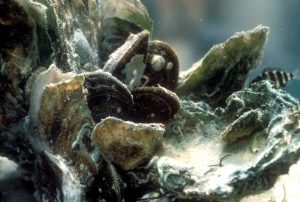TPW TV– The Oyster Grind
This is Passport to Texas
Texas reefs once held what seemed like an endless supply of oysters. But times have changed. Over the years the daily sack limits have been cut back.
It used to be a hundred and fifty sack a day.
Mauricio Blanco has been an oysterman in Lavaca Bay for 30 years.
Now it’s went down from one hundred and fifty sacks to ninety sacks, and then from ninety sacks, they went down to fifty sacks; this year the state limit is thirty sacks. So, every year we getting less, and less, and less. And the bad part is that fuel, it don’t go down, it goes up and up. But like right now, we probably going to make twenty sacks all day long. Maybe.
In a Texas Parks and Wildlife TV segment that airs the week of May 26, viewers visit the coast where a section of Galveston Bay receives much-needed TLC in the form of new reef bottom. Bill Rodney is a Natural Resource specialist with Texas Parks and Wildlife.
Recent science has indicated that most oyster reefs are operating right on the border of sustainability. Everybody realizes that something needs to be done. The key to restoring the habitat is putting fresh cultch out there, cultch can be any materials that oysters can grow on.
Witness the rebirth of an oyster reef and the measures taken to ensure the success of the resource and those who depend on it…on the Texas Parks and Wildlife TV series, the week of May 26 on PBS. Check your local listings.
The Sport Fish Restoration Program supports our series.
For Texas Parks and Wildlife, I’m Cecilia Nasti.



 Passport to Texas is a
Passport to Texas is a  Passport to Texas is made available by:
Passport to Texas is made available by: